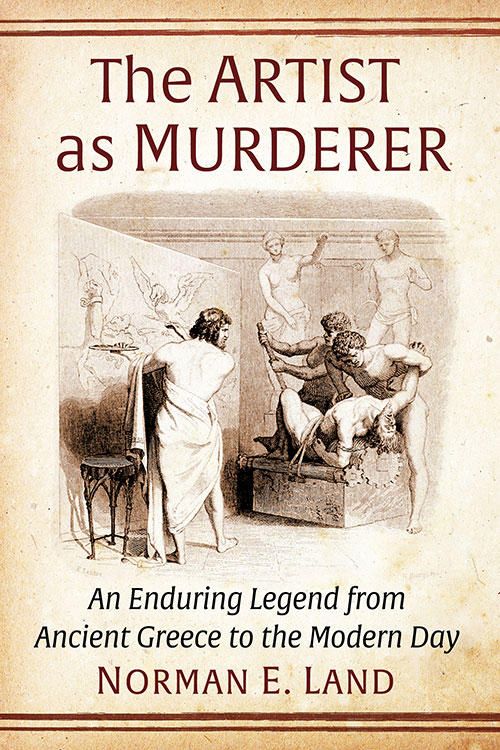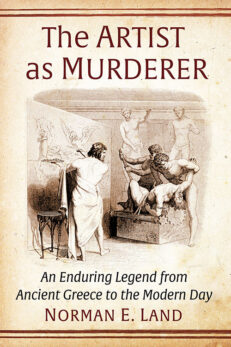The Artist as Murderer
An Enduring Legend from Ancient Greece to the Modern Day
Original price was: $39.95.$19.99Current price is: $19.99.
In stock
About the Book
The 4th century BC Greek painter Parrhasius murdered his model—an old man who was his slave—to achieve, so the story goes, a more lifelike depiction of nature. The tale has inspired similar, more elaborate stories about both well known and obscure artists—including Leonardo da Vinci, Michelangelo and Rubens. Elements of the tale have appeared in theater, literature and film, as well as in comments by painters, historians, critics and anatomists. Challenging the archetype of the artist as a sympathetic lover of nature, this book examines the artist as cruel and murderous in service of art and ambition, and indirectly addresses a different understanding of the relationship between art and life.
About the Author(s)
Bibliographic Details
Norman E. Land
Format: softcover (6 x 9)
Pages: 205
Bibliographic Info: appendices, notes, bibliography, index
Copyright Date: 2023
pISBN: 978-1-4766-8395-9
eISBN: 978-1-4766-4860-6
Imprint: McFarland
Table of Contents
Acknowledgments viii
Preface 1
1. Introduction: The Artist as Murderer 5
2. The Image of Parrhasius 12
3. Parrhasius and the Olynthian Slave 19
4. The Afterlife of Seneca’s Tale 28
5. Tormented Models 38
6. Michelangelo Murders a Model 46
7. Carpenter’s Tale 53
8. The Tale Retold 59
9. Variations on the Tale 62
10. Professional Opinions 68
11. A Turkish Spy on Giotto 72
12. A Legend of a Sculptor 80
13. Parrhasius in Love 84
14. The Return of Parrhasius 89
15. “The Man in Purple” 93
16. Socrates and Parrhasius 100
17. The Return of Michelangelo 104
18. Criminal Artists 114
19. Death and Detachment 121
20. Afterword: Art and Life 124
Appendix A: Giovanni Paolo Marana, “A Turkish Spy on Giotto” 129
Appendix B: Adelbert von Chamisso, “The Crucifix: An Artist’s Legend” 133
Appendix C: Nathaniel Parker Willis, “Parrhasius” 138
Appendix D: Espy W.H. Williams, “Parrhasius; or, Thriftless Ambition” 142
Appendix E: Pierre Louÿs, “The Man in Purple” 151
Notes 167
Bibliography 181
Index 191







